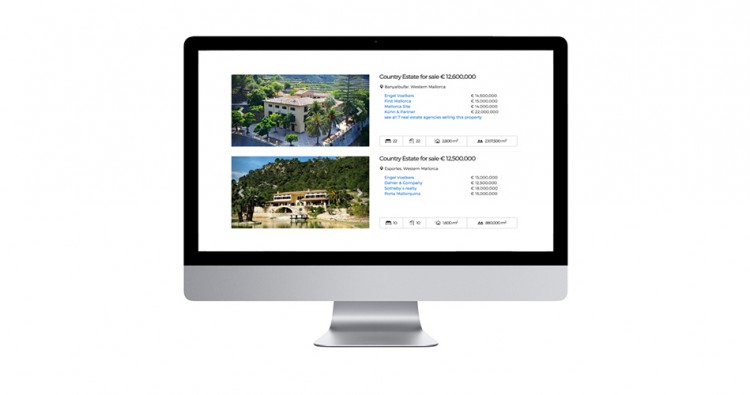Creating events in your real estate CRM seems like a simple thing. And it is. But is it worth it to invest in a complete and descriptive article about it? Of course.
The action of “creating an event” is just the first step that allows you to make a series of decisions with fundamental importance in the short, medium and long term.
Don’t you believe it? Read the article and understand in depth how creating events in your real estate CRM and keeping track of what’s going on with your business can help you sell more in the future and, consequently, have satisfied clients.
The customer journey of a real estate client
First of all, let’s talk about the basics: your client is your focus. The customer journey is something of foundational importance, mainly in a business where deals are not sealed overnight. Selling a property is a process that can take quite some time, lasting for months until the final contract is signed.
In the meantime, all information collected about the client is gold for you to keep track of everything that’s important.
- The necessities of your real estate client.
- Which visits have they made during the process?
- Which properties caught their attention and why?
- In which properties they are not interested in and why?
- The client’s feedback about your relationship throughout the process.
This information is what completes and improves the customer journey over time, guiding the decisions of the professional during the process of the deal. In short, we can split this journey into four parts.
1. Mapping necessities
This is the first step of the customer journey.
It tends to be a moment in which the client is alone with their thoughts. No matter in which stage of their life they’re in, the first thing to be done is to map their necessities. Usually, the standard questions there are in the origin of the search for a new property are asked:
- In which location do I want to live?
- Do I want to be closer to the beach, the city or the countryside?
- Do I want to rent or buy a property?
- What is my budget?
- How many bedrooms do I need? 2, 3, 4…?
These questions can be accompanied by research from the very first moment. The real estate portals and websites are where the client goes running their first searches and find what fits their preferences.
At this stage, the client notices that searching for properties takes too much time. Besides, many times the information is not updated, or worse, differs from website to website. The more they search, the more the information becomes confusing. Therefore, it’s time to look for a professional that helps them speed up this process.
2. Find the right real estate professional
The second stage happens when the client effectively decides to ask for professional help to find properties within a budget and in a specific location. This is when your relationship begins, but your work should already be ongoing.
In order to allow the potential client to find you, you need to have active social media profiles. Your website should be updated with the most recent properties in your portfolio, as well as listings in real estate portals. In case you write opinion articles, you should look for the keywords that your target searches for. Create a real estate blog and add professional articles on the most relevant topics. And if writing isn’t your cup of tea, venture to launch a Youtube channel. Communicating is key to being found.
Never neglect the information you publish, neither in quantity nor in quality. People want to see recent and precise content about your area of knowledge. Once they know you are an expert on a location, people will give credit to your word, even if they’ve never talked to you.
When they contact you, you will know the real impact of all the online work. And, therefore, boost the attraction of qualified leads and, finally, more sales.
3. Visits to the properties
After meeting your new client and their necessities, it’s time for the visits. At this stage, as well as in any other relationship, it’s the first impression that counts the most.
Bring your client only to those properties that you know are of their interest. Show them the house in key hours of the day. If you know that the property has a great sunset view, show them by the end of the day. If the morning provides a privileged natural light to the place, try to book a visit during this period of time.
3. The final decision
After visiting the right properties, the customer journey enters the last stage of the business: the deal must be marked as won or lost, justifying why.
If the client approves the property and seals the deal, ask them for feedback about your services. The same should happen in case the client doesn’t find the property they wanted: every feedback is important to enhance your future work.
Remember: your client is your focus. It’s for them that you work. Therefore, strive to improve the customer journey.
Find out all about CASAFARI CRM!
Creating events on your real estate CRM
But, in the end, what event creation has to do with the customer journey?
It’s with the events that you create in your CRM that you can track and create a pattern of interactions with clients and potential clients, speeding up processes and organizing the work.
For each phase, you must schedule an event in your CRM. For example, at a stage in which you want to follow the movements of a lead for later measures. The calendar of events exists to be used daily, as a guide to your next steps. And the more you use it, the more information you gather about a lead.
Imagine in 6 months, when you open an event that reminds you that a couple of clients became parents. It’s time to congratulate them on the coming of their newborn and remind them that the family can count on you in case they’re looking for a bigger home.
Whether it’s a necessity of yours or of your team, the client needs to be followed up closely. This proximity also benefits your relationship with the client. Therefore, make good use of the calendar of events. Here are some good practices.
Get to know CASAFARI CRM’s plans
Dynamic calendar of events
As events are highly important to track the customer journey, we have developed CASAFARI CRM in a way that you can create new events inside different moments.
Whether it’s in the tab of leads, properties, contacts, events or even on the dashboard, you can add the respective event to trigger one action.
Above all, what matters is to follow the potential client and create a thorough history of your interactions.
Add events when visits are made to properties, gather feedback, get in touch in X months and promote these good practices among your teammates.
Furthermore, you don’t depend on your computer to add events. Remember to use CASAFARI CRM APP for these kinds of tasks.
Always fill in all fields required about an event. The title, to whom it’s destined, the property or properties involved, the client’s name and dates, as well as a brief description for extra information.
In these fields, you can also select (or not) to have a connection with your Google Calendar. The system was designed to make your work easier and to allow you to have information always at hand.
You also have the possibility to add comments, locations, feedback and the signature of your clients. There’s an option for every need.

Nurture your real estate CRM with useful information
As said before, the more events you add, the more information you have at your hands. In this sense, we highlight 3 main points that bring you benefits in the short, medium or long term for your career as a real estate professional.
History of all your contacts
All information is relevant. From the lead to the conversion into a client and sealing of the deal. Don’t lose any information about your client. Only with access to complete history, you can differentiate from your competitors. Besides, the history is available for your team to see. Any teammate can make themselves aware of at which stage your client is in the customer journey.
Furthermore, when it comes to managers, can also use the history of contacts to keep an eye on the work that’s being developed by the estate agents. This record allows you to be and put anyone on par with what’s going on with a contact.
Save time and work faster
It’s easy to understand the time-saving process when all teams are able to access updated information, right?
There’s no failure. No one loses time in unnecessary meetings, all information is clear and available for complete comprehension and visibility. Besides, scheduled events allow you to follow up later on subjects you wouldn’t remember by yourself.
Invest in this way of working and see for yourself the agility you will gain in communications and the time saved for the topics that really matter.
The real estate CRM that works for you
Of course, CASAFARI CRM can help you more than you imagine.
By adding the correct information, here you will be able to concentrate, find and manage your whole portfolio of clients. Don’t lose any more opportunities to be the first one to show your work. This way, you will be the first to come up in your client’s minds when they are looking for a real estate professional.
You only need to organize this work once to add fluidity to your day-to-day and, later on, teach your team to do the same.
After all of this, you tell us: does creating events on your CRM bring you benefits or not?
Interested in CASAFARI CRM? Get in touch!
Photo by Medienstürmer on Unsplash






